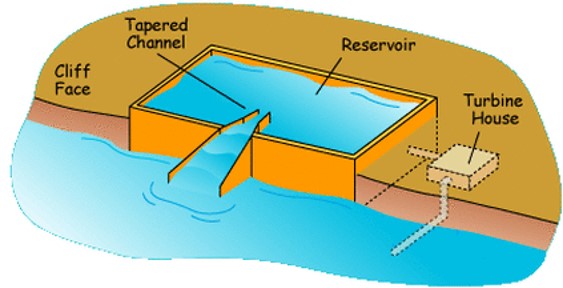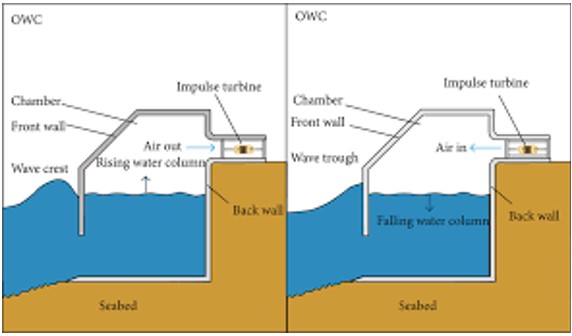- Definition and Types of Energy
- Myths And Misconceptions About Energy
- The Relationship Between Energy and Environment
- Climate Change and Carbon Footprint
- Greenhouse Gas Effect
- The Role of Human-Induced Greenhouse Gases and Energy Consumption
- Energy Efficiency and Sustainability
- Renewable Energy Sources and Future Perspectives
- Play and Learn
- Solar Energy Conversions
- Solar Energy Worldwide
- Solar Energy in Partner Countries
- Positive and Negative Impacts
- Technologies for Harnessing Solar Energy
- Solar thermal energy technologies and applications
- Electricity Generation Methods
- Passive Heating and Cooling of Residences with the Sun
- Concentrator solar power (CSP) systems and electricity generation
- Systems and Applications That Generate Electricity directly from solar rays
- Photovoltaic Cells and Panels
- Domestic PV Systems
- Off-Grid PV Systems
- Hybrid Connected Systems
- Materials Used in PV Cells
- Play and Learn
 Wave Energy
Wave Energy
Wave energy is a renewable energy source that occurs as a result of the movement of the wind on the sea and ocean surface. Wave energy plants operate with systems placed on the sea surface or seabed. Turbines that rotate with the movement of the waves produce electricity through a generator. In addition to electricity production, wave energy can also be used in different areas such as hydrogen production.
Although the use of wave energy is limited worldwide, it is primarily evaluated by the USA, Portugal and some European countries. For example, the Wave Energy Park established 8 km offshore in the US state of Oregon has an installed capacity of 40 kW. Wave motion occurs as a result of the friction of the wind with the sea surface. Different systems have been developed to obtain energy from this motion:
Canal systems: Creates potential energy by directing water to reservoirs.

Hydraulic pump systems: Floating systems that work with wave motion.

Oscillating water column (OWC) systems: These are mechanisms that produce electricity by compressing air.

These systems convert wave energy into mechanical energy and then into electrical energy for use. Wave energy conversion systems are divided into two main groups:
- Active systems: Generate mechanical energy directly from wave motion. Examples: Duck and The Raft systems.
- Passive systems:Generate electricity by converting wave energy into hydraulic lift and then into potential energy. Examples: Oscillating Water Column (OWC) and TAPCHAN (shrinking channel system).
Wave energy conversion systems are divided into three groups according to their installation areas:
- Systems Installed on the Shoreline:
- They are constructed as fixed or buried on the shore.
- Since wave power is lower on the shore, energy efficiency is low.
- Near Shore Type Applications:
- They are positioned at depths of 15-25 meters.
- Oscillating Water Column (OWC) systems are widely used.
- Off-shore Type Applications:
- They are installed at depths of 40 meters and above.
- They are suitable for high wave regimes.
- They require long electrical cables to transfer energy to the shore.
- Pelamis System: It is a system that operates a generator and produces electricity with the movement of hydraulic oil in hydraulic cylinders.